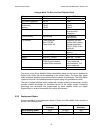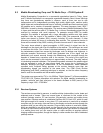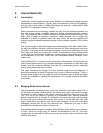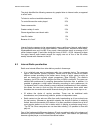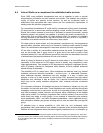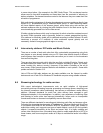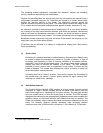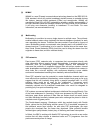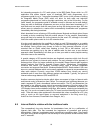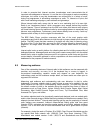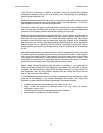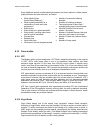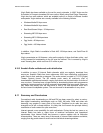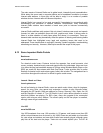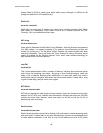
DIGITAL RADIO GUIDE INTERNET RADIO
82
(6) Podcasting
Podcasting is a way to 'subscribe' to radio programmes and have them delivered to
your personal computer. Podcasting stands for Personal On-Demand
(narrow)casting. It combines blogging with audio files that can be played on your
PC or MP3 player. It involves a “push” of specially encoded multimedia content to
subscribed PCs via RSS 2.0 protocol. Podcasting allows the listener to choose not
only to what to listen to, but also when and where. Users can return feedback and
comments. It is not limited to radio and music (typically encoded in MP3) but can
include video, films, games, etc. Is not limited to broadcasters, virtually anybody
who has content can become a podcaster.
Subscribers to Radio podcasts can automatically receive the latest edition of the
programme in the form of a file. This file can then be easily transferred to a
portable MP3 player. To do this, users need an Internet connection and a piece of
podcast software which is usually available free of charge. This software can check
the radio station for content updates and automatically download them to the player
as soon as they are available. As a general rule, programme files can be made
available shortly after broadcast, but in some cases this may be several hours later.
There is a multitude of podcasting software available from
www.podcastingnews.com. This software varies from one computer platform to
another (Windows, Mackintosh, Linux, etc). The same website also provides
software for publishing podcasts.
6.7 Internet Radio terminals and playback devices
Internet radio terminals are user devices which can reproduce streaming content. In the
beginning, streams could be played by a software application on the PC. Now we are
seeing media players in mobile devices and in home entertainment products such as the
set-top box. Today, a PC user may have three or more players installed to provide
support for different codecs available in the market. Thankfully, PC makers have made it
easy with pre-loaded music players, from Apple's ITunes and QuickTime, to Real Player
and Windows Media Player.
Players can be used in three different ways: as a content portal, a stand-alone player, or
a plug-in to a web browser. In the latter case, the streaming content may become an
integral part of a synchronised rich media experience, combining text, graphics, audio
and video (using SMIL
15
).
Audio-only players are still very popular, as there is huge demand from music lovers to
download tracks over the Internet. They serve as a jukebox to organise music libraries
and set up playlists. They can also rip CDs, store MP3 files on the hard drive and
download to portable music players such as iPod. Examples include WinAmp from
NullSoft, and iTunes from Apple.
Today, about 95% of all media players installed on the desktops worldwide, are
Microsoft's Windows Media. RealPlayer and QuickTime follow closely by 86% and 82%,
respectively. Flash players are becoming increasingly popular for multimedia, whereas
MP3 are mostly used for downloadable audio files.
15
Synchronised Multimedia Integration Language



